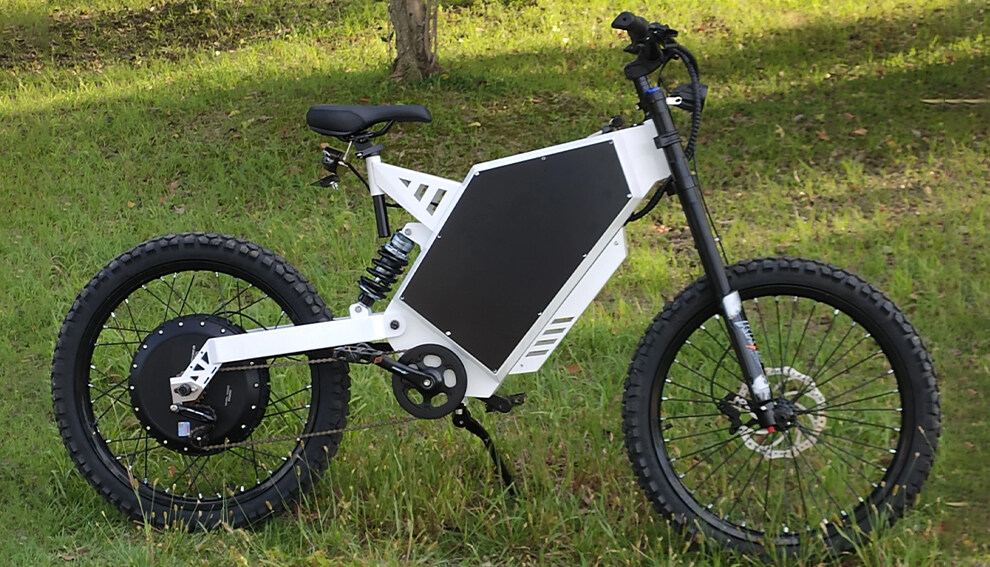Email format error
Email cannot be empty
Email already exists
6-20 characters(letters plus numbers only)
The password is inconsistent
Email format error
Email cannot be empty
Email does not exist
6-20 characters(letters plus numbers only)
The password is inconsistent


The surge in interest surrounding electric bicycles (e-bikes) has reshaped the landscape of personal transportation. These innovative two-wheelers offer a blend of convenience, efficiency, and sustainability, appealing to commuters, adventurers, and environmentalists alike. In this comprehensive exploration, we delve into the diverse world of electric bicycles, examining their various types, the underlying technology that powers them, and the profound environmental benefits they offer.
Commuter E-Bikes:
Designed with urban mobility in mind, commuter e-bikes offer a practical solution for navigating city streets. These e-bikes typically feature lightweight frames, efficient motors, and integrated accessories such as lights, racks, and fenders. Commuter e-bikes prioritize comfort, convenience, and versatility, making them an ideal choice for daily commuting and errands around town.
Mountain E-Bikes:
For outdoor enthusiasts craving adventure off the beaten path, mountain e-bikes, or e-MTBs, provide an exhilarating ride. These rugged machines are equipped with powerful motors, robust suspension systems, and durable components designed to withstand the rigors of off-road terrain. Mountain e-bikes offer riders the freedom to explore trails, conquer hills, and immerse themselves in nature like never before.
Cargo E-Bikes:
Cargo e-bikes are revolutionizing the way we transport goods and passengers in urban environments. With their sturdy frames and spacious cargo areas, these e-bikes are ideal for hauling groceries, transporting children, and making deliveries. Cargo e-bikes offer businesses and families a practical and eco-friendly alternative to traditional modes of transportation, reducing reliance on cars and trucks for short-distance trips.
Folding E-Bikes:
Folding e-bikes are perfect for commuters and travelers seeking portability and convenience. These compact e-bikes feature collapsible frames that allow them to be easily folded and stored in tight spaces, making them ideal for navigating crowded city streets and public transportation. Folding e-bikes offer the ultimate blend of mobility and versatility, enabling riders to take their e-bikes wherever they go.
Selecting the right electric bicycle requires careful consideration of several key factors:
Motor Power:
The motor power of an e-bike determines its performance and capabilities. Higher-wattage motors provide greater assistance, making them suitable for hilly terrain and heavier loads. However, riders should balance power with efficiency to optimize battery life and range.
Battery Range:
Battery range is a crucial consideration for e-bike riders, especially those planning long-distance commutes or extended outings. Factors such as rider weight, terrain, and assist level can impact battery consumption, so it's essential to choose a battery with sufficient capacity to meet your needs.
Frame Style:
The frame style of an e-bike influences its comfort, stability, and versatility. Step-through frames offer easy mounting and dismounting, making them suitable for riders of all ages and abilities. Diamond frames provide a traditional look and robust support for off-road adventures.
Intended Usage:
Consider how and where you plan to use your e-bike to determine the most suitable features and specifications. Commuters may prioritize integrated lights, racks, and fenders for practicality and safety, while mountain bikers may prioritize suspension travel, tire clearance, and frame geometry for optimal performance on rough trails.

The technology behind electric bicycles continues to evolve, driving improvements in performance, efficiency, and user experience.
Motor Types:
E-bikes are equipped with either hub motors or mid-drive motors, each offering unique advantages. Hub motors are integrated into the wheel hub and provide direct drive assistance, while mid-drive motors are mounted at the bike's bottom bracket and leverage the bike's gearing system for efficient power delivery.
Battery Technologies:
Lithium-ion batteries are the most common battery technology used in e-bikes due to their high energy density, lightweight design, and long lifespan. Advances in battery chemistry and manufacturing processes have led to improvements in energy efficiency, charging speed, and overall reliability.
Pedal-Assist Systems:
Pedal-assist systems vary in their sensor technology and responsiveness, influencing the rider's experience and efficiency. Cadence sensors measure pedal rotations and provide assistance based on the rider's pedaling cadence, while torque sensors measure the force applied to the pedals and provide assistance proportional to the rider's effort.
Electronic Drivetrains:
Electronic drivetrains, such as electronic shifting systems, offer precise and smooth gear changes with minimal effort. Unlike traditional mechanical drivetrains, electronic drivetrains utilize motors and sensors to shift gears automatically or with the push of a button, reducing maintenance and enhancing overall performance.
Electric bicycles have the potential to significantly reduce carbon emissions, alleviate traffic congestion, and mitigate air pollution compared to conventional vehicles.
Reducing carbon emissions:
By promoting active transportation and reducing reliance on fossil fuel-powered vehicles, electric bicycles can help decrease greenhouse gas emissions and combat climate change. Studies have shown that replacing car trips with e-bike trips can lead to substantial reductions in carbon dioxide emissions and other harmful pollutants.
Alleviating traffic congestion:
The compact size and maneuverability of e-bikes make them well-suited for navigating congested urban areas and bypassing traffic congestion. By encouraging more people to cycle instead of drive, e-bikes can help reduce traffic volume and improve overall traffic flow, leading to shorter travel times and less frustration for commuters.
Mitigating air pollution:
The zero-emission operation of electric bicycles eliminates tailpipe emissions and reduces the release of harmful pollutants into the atmosphere. By promoting cleaner air quality and reducing exposure to air pollution, e-bikes contribute to public health and environmental sustainability in urban areas.
In conclusion, electric bicycles represent a transformative force in the realm of personal transportation. With their diverse range of types, innovative technology, and significant environmental benefits, e-bikes offer a compelling alternative to conventional vehicles. Whether you're commuting to work, exploring the great outdoors, or running errands around town, there's an electric bicycle to suit your needs and preferences. By embracing electric bicycles as a sustainable mode of transportation, we can create cleaner, healthier, and more livable communities for generations to come.